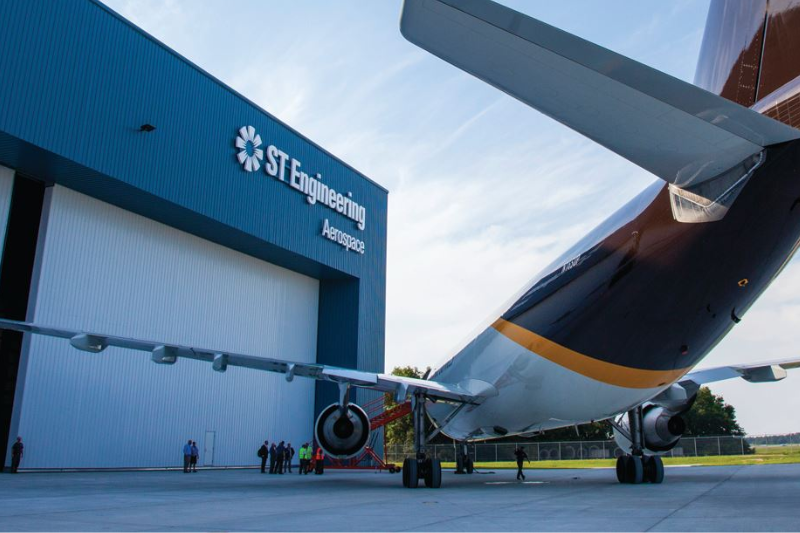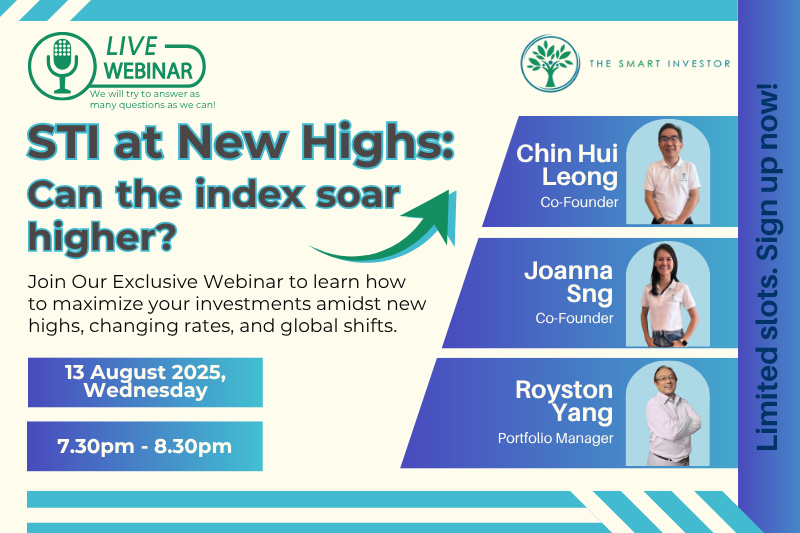Blue-chip stocks are well-known for their stability, resilience, and long track records.
That said, they are still businesses that are subject to occasional challenges and should be carefully assessed by prudent investors who are vigilant for any risks.
Recently, we identified three blue-chip stocks whose share prices fell sharply upon the release of their latest earnings and business updates.
Investors may wonder if this event represents a buying opportunity.
Let’s review this trio of companies to determine if they deserve a second look.
Singapore Technologies Engineering (SGX: S63)
Singapore Technologies Engineering, or STE, is an engineering and technology group serving customers in the aerospace, smart city, defence, and public security sectors.
The group released its first half of 2025 (1H 2025) earnings in the morning of 14 August, which promptly saw its share price plunge 6.3% from its all-time high of S$8.93 to S$8.40.
By 25 August, shares of STE were down 12.7% since 13 August.
STE’s results, though, were strong.
Revenue rose 7.2% year on year to S$5.9 billion, while operating profit increased by 15.2% year on year to S$602.2 million.
Net profit stood at S$402.8 million, up 19.7% year on year.
An interim dividend of S$0.04 was declared for the second quarter of 2025 (2Q 2025), taking the total dividend for 1H 2025 to S$0.08, unchanged from a year ago.
The engineering giant also announced healthy contract wins of S$9.1 billion for 1H 2025, with the Defence & Public Security division taking on the bulk of these new wins at S$4.2 billion.
These contracts pushed STE’s order book to a high of S$31.2 billion as of 30 June 2025, with S$5 billion expected to be delivered for the remainder of this year.
Investors should be impressed by these results, so why did the share price plunge?
One reason could be STE’s valuation, which has hit levels not seen in years.
As can be seen above, STE’s average price-to-earnings (P/E) ratio over the last decade was around 22 times.
At S$8.96, shares of STE were trading at a forward P/E ratio of 34.6 times based on the annualised 1H 2025 earnings per share.
STE released its Investor Day targets earlier this year and is also looking at raising its annual dividend from S$0.17 to S$0.18 this year.
The group also implemented a progressive dividend policy from 2026 onwards, which will see an incremental dividend declared equivalent to one-third of the year-on-year increase in net profit.
Sembcorp Industries (SGX: U96)
Sembcorp Industries, or SCI, is an energy and urban solutions provider.
The group has a balanced energy portfolio of 27 GW and urban development projects that span 14,800 hectares across Asia.
Like STE, SCI reported its 1H 2025 earnings in the morning of 8 August, and also saw its share price fall off a cliff.
SCI’s shares plunged 13.8% that day to S$6.72, and went on to fall further to S$6.11 by 25 August, for a total decline of 21.7% from its peak of S$7.80 on 7 August.
The group delivered a downbeat set of earnings with revenue dipping 8% year on year to S$2.9 billion.
Revenue fell because of lower contributions from gas and related services resulting from lower pool prices in Singapore, along with the absence of contributions from SembEnviro.
Net profit excluding exceptional items stayed flat year on year at S$491 million.
Despite the moribund results, SCI upped its interim dividend by 50% year on year from S$0.06 to S$0.09.
The group continued to see growth in its renewables portfolio, which ended 1H 2025 with 18.9 GW in gross renewables capacity.
SCI’s target is to increase its installed capacity to 25 GW by 2028.
For its integrated urban solutions division, land for development stood at 14,800 hectares as of 1H 2025 with gross floor area (GFA) at 608,000 square metres.
SCI’s 2028 target is to have 18,000 hectares of land for development and 1.5 million square metres of GFA.
Singapore Airlines Limited (SGX: C6L)
Singapore Airlines Limited, or SIA, is Singapore’s flagship airline.
The group has an operating fleet of 204 passenger and freighter aircraft as of 30 June 2025.
The carrier released its first quarter of fiscal 2026 (1Q FY2026) business update on the evening of 28 July.
The next day, SIA’s share price plunged 7.4% to close at S$7.04. As of 25 August, the airline’s share price stood at S$6.62 for a total decline of close to 13% from S$7.60 as of 28 July.
SIA reported a mixed set of earnings for the quarter.
Total revenue for 1Q FY2026 inched up 1% year on year to S$4.8 billion.
Operating profit, however, fell by 13.8% year on year to S$405 million because of higher non-fuel expenses.
Net profit plunged 58.8% year on year to S$186 million, partly because of losses from Air India, which were equity-accounted.
Despite the downbeat results, SIA saw passenger load factor increase by 0.7 percentage points to 87.6%.
However, passenger yields slipped almost 3% to S$0.10 per revenue passenger-kilometre because of stiffer competition.
Demand for air travel remains healthy, but the volatile global environment, along with Trump’s tariffs, may dampen consumer sentiment in the medium term.
We’ve found 5 SGX-listed dividend stocks with strong track records in turbulent markets. If you want consistency in an uncertain world, start here.
Follow us on Facebook, Instagram and Telegram for the latest investing news and analyses!
Disclosure: Royston Yang does not own shares in any of the companies mentioned.






